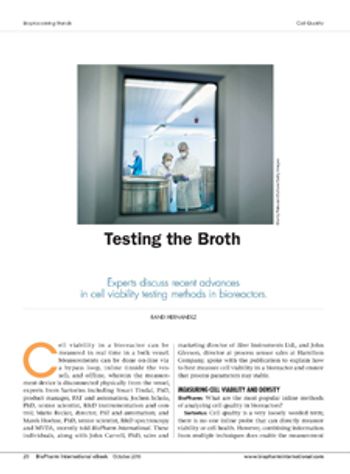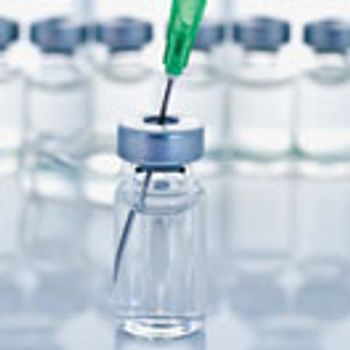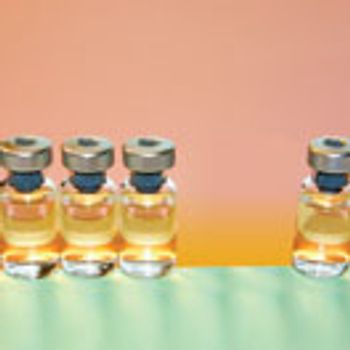
A new report says that failure to account for rebates, discounts, and price concessions leads to an “overstatement of payments realized by manufacturers” in most annual industry drug spend reports.
Randi Hernandez was science editor at BioPharm International from September 2014 to May 2017.

A new report says that failure to account for rebates, discounts, and price concessions leads to an “overstatement of payments realized by manufacturers” in most annual industry drug spend reports.

The Reproducibility Project: Cancer Biology has been working to confirm the results in five prominent cancer biology experiments, and just released the results of its preliminary findings on Jan. 19, 2017. The researchers were only able to validate the findings in two of the five initial studies. The researchers could not replicate the findings in one study, and deemed another two studies “uninterpretable” because the tumor cells under investigation either grew too quickly or too slowly to measure whether the cancer drug had the predicted effect.

A new FDA Q&A document released on Jan. 12, 2016 describes 180-day exclusivity for generic-drug manufacturers and explains the number of conditions under which an abbreviated new drug applicant (ANDA) submitting a paragraph IV certification would forfeit eligibility to be the authorized generic manufacturer of a drug.

FDA released a long-awaited draft guidance to help sponsors seeking to demonstrate interchangeability for biosimilar products.

Industry experts identify the future focus of the biopharma industry in a new survey.

The locations will feature end-to-end bioprocessing centers and will be in Shanghai, China and Boston, MA.

The membrane-based Protein A purification tool was unveiled at the 2017 PepTalk Conference in San Diego, California.

Language surrounding regenerative medicine and the REGROW Act appeared back into the 21st Century Cures Act right before it passed. What will this mean for the controversial testing and marketing of stem-cell therapies?

The partnership will focus on providing practical information to clients on the development of biologics and vaccines.

The companies will combine expertise on T-cell therapies with two or more binding domains to create novel oncology medications.

A judge ruled that Regeneron’s mAb be removed from the market after Amgen alleged that the marketing of Praluent hurt its reputation as innovator of this class of drugs.

In an attempt to battle low production volumes of hard-to-manufacture biopharmaceuticals, GE Healthcare announced on January 4, 2017 that it will partner with Synpromics on the development of synthetic promotors. The goal of the collaboration is to identify promoters that will work most effectively with GE’s existing expression system for optimal transcription.

FDA’s Center for Drug Evaluation and Research (CDER) approved 22 new molecular entities (NMEs) in 2016, according to a January 4, 2016 release from the agency. Of the 22 NMEs, 12 were large-molecule therapeutics. Of CDER’s 45 novel drug approvals in 2015, 17 were considered large-molecule therapeutics (larger than 900 Daltons).In 2016, 11 of the 12 large-molecule drugs that were approved were biologics. This includes seven monoclonal antibodies (mAbs), one hormone, and three DNA-derived medications. The remaining large-molecule medication was a diagnostic agent.

Experts discuss recent advances in cell viability testing methods in bioreactors.

Improvements to aseptic manufacturing procedures are long overdue. But how feasible is it for manufacturers to modernize fill lines of legacy products?

A company’s fill/finish individual facilities can be negatively impacted by a region’s economic climate, as currently observed at some of the pharmaceutical manufacturing locations in Puerto Rico.

Experts discuss recent advances in cell viability testing methods in bioreactors.

Amgen discussed the drug-delivery approaches to two of its biologics in a recent second-quarter earnings call.

The move follows a warning from FDA wherein FDA cited ALK-Abello with numerous manufacturing violations.

The Phase I trial will test Bavarian Nordic’s vaccine, which is manufactured using a vaccine vector based on smallpox.

The therapeutic candidate AZD8601is an investigational mRNA-based therapy that will be tested for its ability to regulate the protein that influences vascular tissue growth.

The vaccine candidate has also won a Priority Medicines (PRIME) status from EMA.

Amgen and Allergan’s biosimilar to popular breast cancer drug Herceptin is comparable to the innovator molecule, Amgen recently announced.

A new website collects and rates information about life-science supplies from academic journals to simplify researcher purchasing decisions.

Thirty percent of current Remicade patients could be eligible for a switch to competitors such as Inflectra, according to estimates, although J&J doubts this will occur in the United States in 2016.

The collaboration will focus on the investigational candidate JTX-2011 and up to four other early-stage programs in immune-oncology.

A new study examines the oral delivery of protein drugs in plant cells and hypothesizes that the cold storage and transportation of biologics could someday be eliminated.

FDA said in briefing documents ahead of a July 13, 2016 meeting that Sandoz’s biosimilar GP2015 has “no clinically meaningful differences” with the US-licensed and EU-licensed versions of Enbrel (etanercept) in terms of safety, purity, and potency.

The agency says that the routine large-scale compounding of drugs that are exact copies of existing medications undermines the the drug approval process.

Capacity for complex therapeutics is become increasingly difficult to predict.